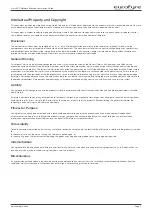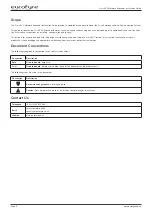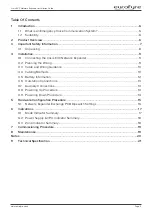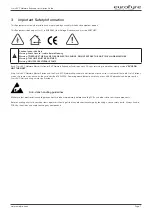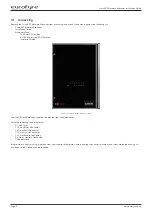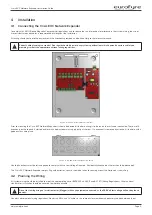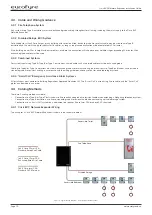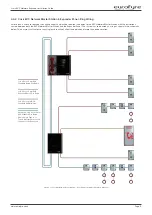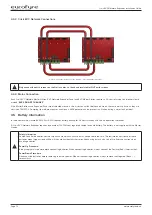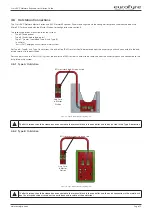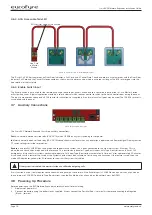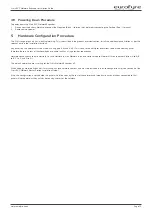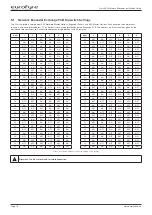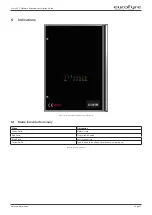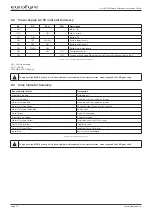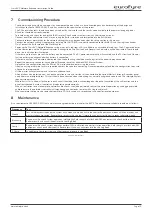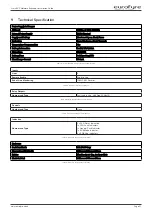
Crisis EVC Network Expander Installation Guide
Page 6
www.eurofyre.co.uk
1 Introduction
1.1 What is an Emergency Voice Communication System?
An Emergency Voice Communication System, or EVCS, is a system that allows voice communication in either direction between a central control
point and a number of other points throughout a building or building complex, particularly in a fire emergency situation. The control points, or
outstations by which they are more commonly referred, generally comprise of a Type A outstation, a Type B outstation, or a Type C Combined
Type outstation. “Assist Call” emergency assistance alarm systems can also be incorporated into the EVCS.
EVCS is generally required in the following situations:
•
In any building or sports or similar venue where there are disabled people, or people who may have difficulty negotiating the evacuation
route.
•
In buildings with phased evacuation and/or fire fighting lifts where it facilitates secure communications for building managers, fire wardens,
and attending fire officers.
•
At sports venues and similar complexes, where it will assist stewards in controlling the evacuation of the area in an emergency.
The Crisis Emergency Voice Communications System (EVCS) is designed to fully comply with BS5839 Part 9:2011 for use as a Fire Telephone
system, Disabled Refuge Call system or as a combined system when both Fire Telephones and Disabled Refuge Points are required.
1.2 Suitability
Fire telephone systems are recommended for all public buildings and multi-story buildings over four floors by BS9999.
Disabled Refuge systems are required in buildings where the public or disabled staff gains access to any floor other than the ground floor using
lifts. Refuge areas are provided at each storey exit from each protected stairway.
2 Product Overview
The Crisis EVC System has been designed around a total network concept so all of the Crisis EVC panels have inbuilt networking.
The system comprises 3 types of panel; Crisis EVC Network Master Station, the Crisis EVC Master Station (2 to 8 lines) and a Crisis EVC Network
Expander Panel. For Crisis systems in excess of 8 lines a EVC Network Mater Station MS must be used as the master station, the system can then
be expanded by the use of an EVC Expander Panel or EVC Master Station in blocks of 8 lines up to a maximum system capacity of 512 lines.
Additional EVC Network Master Stations can be used wherever indication and control is required, i.e. fire control rooms and building reception.
These additional EVC Network Master Stations have the facility to filter the information that is displayed, so if there are several buildings with a
EVC Network Master Station in each building, the EVC Network Master Station can be configured to only display/answer EVCS calls from that
building. The system also has the ability for all calls to be displayed/answered on a particular EVC Network Master Station thus becoming the
overall site master. This display filter can also be applied to “Assist Call” indications so panels can be configured to only display/acknowledge calls
from “Assist Call” emergency assistance alarms. This display filtering works in exactly the same manner as for EVCS calls.
Each EVC Network Master Station can be configured so information displayed during daytime is distinct from information displayed during night
time, thus allowing separate locations to handle daytime operations and night-time operations. The day/night timing applies across the entire
network.
The Crisis EVC Network Master Stations are able to call individual outstations via a named directory list or by dialling the appropriate extension
number for the desired outstation. In addition to this it is possible to call from one EVC Network Master Station to another so communication
between master stations is possible and control can be transferred between master stations.
The wiring is a ring and spur topology with outstations being wired on radial spurs from any master station or system expander panel. The EVC
Network Expander and any EVC Network Master Station or EVC Master Station are wired in a ring network up to a maximum of 64. The EVC
Network Expander would typically be sited in convenient locations close to the outstations i.e. risers or stairwells resulting in short vertical wiring
runs. The EVC Master Station can be used to provide local control of up to 8 lines within a building this can then report back to a Crisis EVC
Network Master Station which can provide overall control of an entire site. In this way a very large system can be completed with a minimum of
cabling coming back the master station via the network ring.
Additionally the “Assist Call” emergency assistance alarm system can either be connected to the same line with an outstation, or connected
to a dedicated line. As each line is powered from the EVC Network Master Station or EVC Network Expander, the outstations and the “Assist
Call” emergency assistance alarm system do not require a separate power supply unit. This has the additional benefit of each line being fully
monitored and battery backed up.



